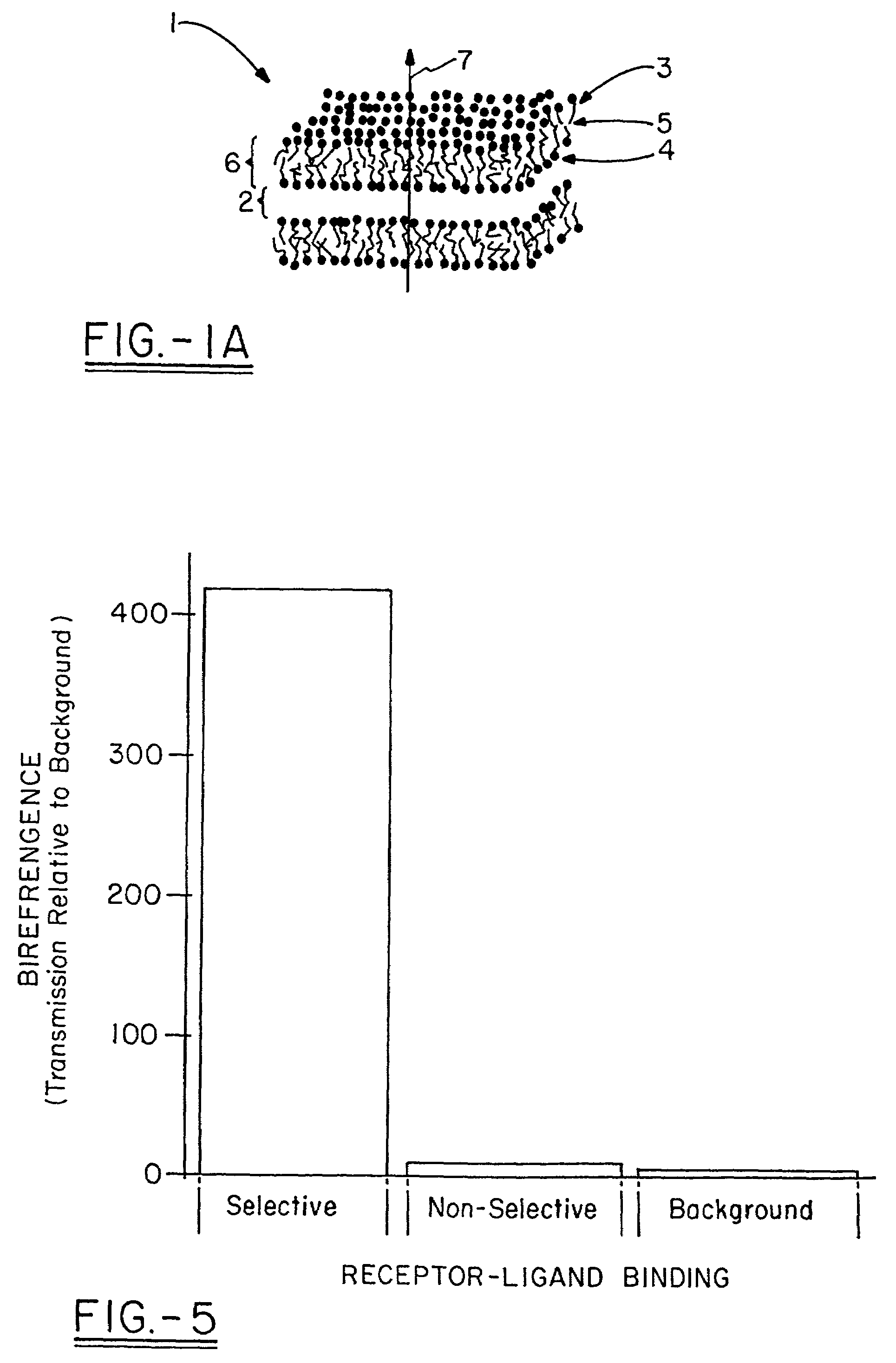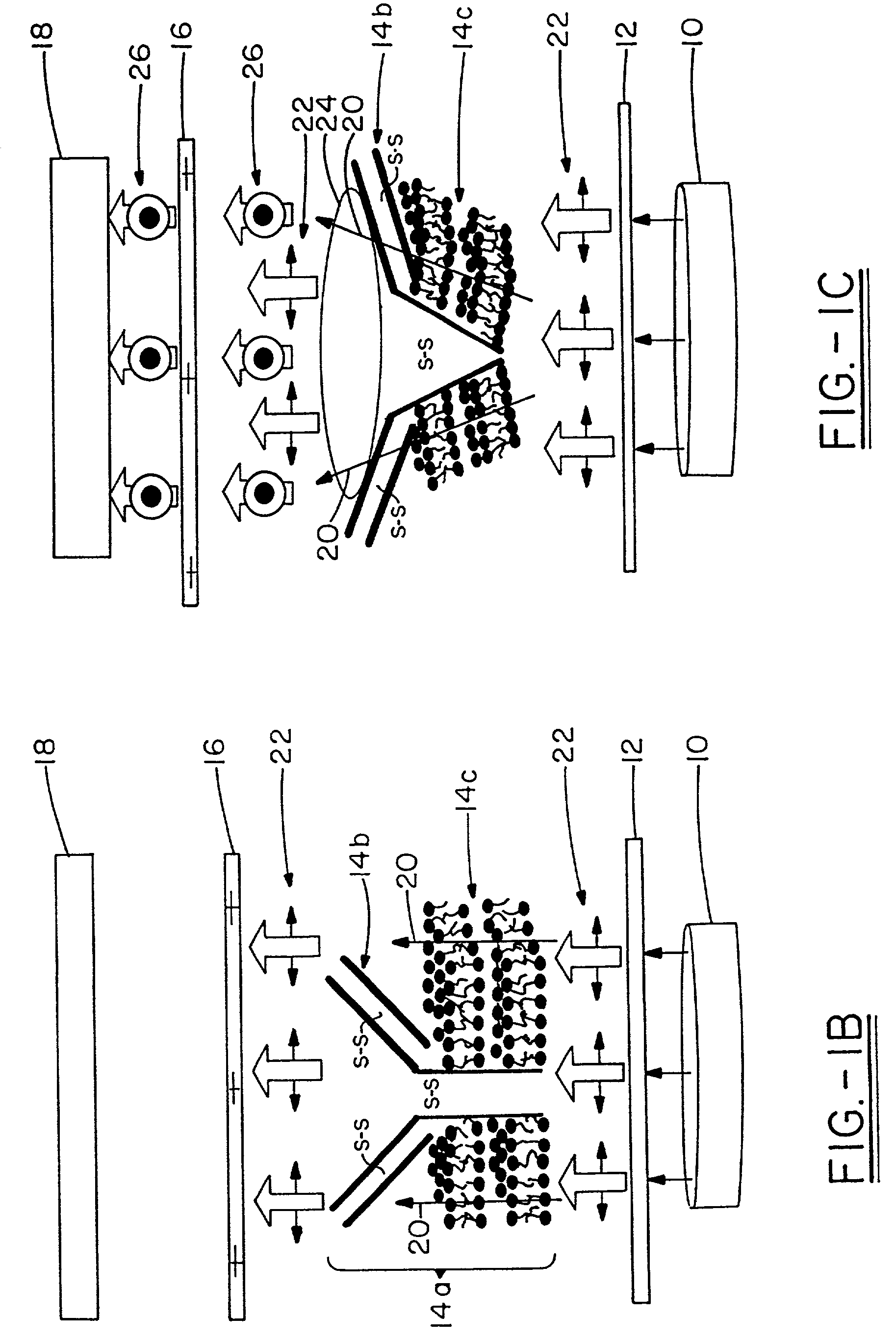Detection and amplification of ligands
a technology of ligand and detection system, applied in the field of detection of ligand by receptor, can solve the problems of limited sensitivity of each receptor, no system has been developed, and achieve the effect of high specificity and high sensitivity
- Summary
- Abstract
- Description
- Claims
- Application Information
AI Technical Summary
Benefits of technology
Problems solved by technology
Method used
Image
Examples
Embodiment Construction
[0035]In the present invention, ligand-specific receptors are interfaced with an amplification mechanism such that a receptor-ligand interaction changes the conformation of the receptor and produces a signal. Amplification preferably occurs through a colorimetric, fluorometric or birefringent shift that can be photometrically detected. The detected signal may then be electronically amplified to automate the system.
Ligand Detection Component
[0036]Any receptor, such as antibodies or biologic / biologically engineered receptors for ligands, can be incorporated into the device as long as binding of the ligand to the receptor causes a detectable distortion of the receptor. For example, any type of monospecific antibody (polyclonal, monoclonal, or phage displayed) can effectively function as a receptor, and thus each of those antibody types will be described in the following paragraphs. Although phage-displayed antibodies can be expeditiously modified for identification of new ligands and a...
PUM
| Property | Measurement | Unit |
|---|---|---|
| pH | aaaaa | aaaaa |
| pH | aaaaa | aaaaa |
| temperature | aaaaa | aaaaa |
Abstract
Description
Claims
Application Information
 Login to View More
Login to View More - R&D
- Intellectual Property
- Life Sciences
- Materials
- Tech Scout
- Unparalleled Data Quality
- Higher Quality Content
- 60% Fewer Hallucinations
Browse by: Latest US Patents, China's latest patents, Technical Efficacy Thesaurus, Application Domain, Technology Topic, Popular Technical Reports.
© 2025 PatSnap. All rights reserved.Legal|Privacy policy|Modern Slavery Act Transparency Statement|Sitemap|About US| Contact US: help@patsnap.com



